Vision which become reality by support of the International Commission on Glass
Creative Glass Serbia is an initiative dedicated to preserving and revitalizing the glassmaking tradition of Paraćin – a heritage that is now largely fragmented and at risk. It connects glassmaking heritage, the creative economy, artistic crafts, and industry to safeguard glassmaking knowledge and skills while reinterpreting them through contemporary creative practices.
Led by the Institute for Creative Entrepreneurship and Innovation, the initiative has three pillars:
Creative Glass Serbia Platform – a digital platform designed to keep glassmaking knowledge accessible to researchers, designers, artists, and craftspeople. It serves as a digital archive that facilitates knowledge transfer and encourages the reinterpretation of Serbia’s glassmaking tradition.
Creative Glass Lab – an experimental open-innovation laboratory where glassmaking techniques, objects, and patterns inspire new creative practices. Rooted in Paraćin’s glassmaking heritage, the lab supports artists, designers, and creatives in developing their own cultural expressions through glass, embracing distributed design, democratizing the creative process, and fostering a regenerative approach to handcrafted glass production.
Creative Glass Forum – an event that promotes networking and international collaboration – a place where glassmaking tradition meets creativity, inspiring new approaches to artistic and craft-based work with glass through discussions, pop-up exhibitions, panels, and workshops.
In 2022, a seed grant from the International Commission on Glass enabled the realization of the Creative Glass Forum (Glass Tradition and New Paradigm of Creative Economy) and two Creative Glass Labs (for exploring the redesign of locally produced vintage glass pieces, inspired by Paraćin’s glass tradition).
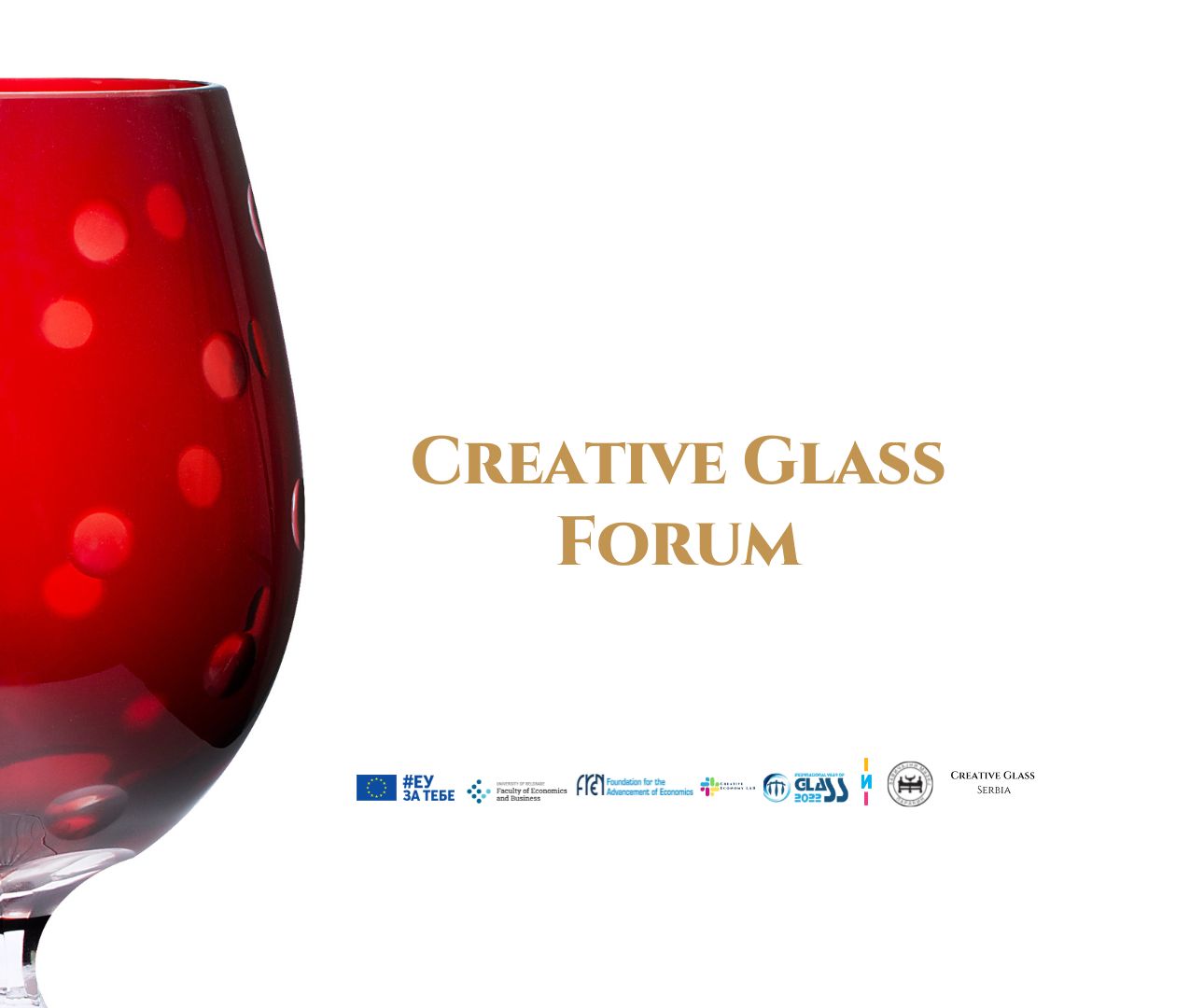
The International Commission on Glass (ICG) represents organizations and individuals throughout the world dedicated to the promotion of science, technology, artistry, and application of glass. Thanks to the IGC’s support during the IYOG 2022, the Creative Glass Serbia initiative, which was just a vision, became a reality.
Creative Glass Forum held in November 2022 was quite significant for future development of the Initiative because, with the support of IYOG 2022 and the participation of foreign experts, the issue of glass revitalization in small (semi-periphery) countries, got a new perspective.
The Forum was attended by domestic and foreign experts such as prof. Alicia Duran, President of ICG and Chair of the IYOG 2022 (opening message), Donovan Rypkema (Heritage Strategies International, Washington), prof. Hristina Mikic (University of Metropolitan), Joachim Allouche (Holmegaard Works – Museum Sydøstdanmark), Jitka Svobodová (Museum of Glass MOSER), Demet Çoşansel-Karakullukçu (Beykoz Glass and Crystal Museum), Jože Rataj (Regional Museum of Celje), Jeanette Bokhour (Marvin Lipofsky Studio), Selçuk Artut and Rezzan Hasoglu (Sabancı University, Istanbul/Studio Sahil, London) and others. Here you can see all speakers and topics of the Forum.
With 65 participants in the Forum, and about 1,500 viewers followed it via online broadcast the conclusions from the Forum help the Institute for Creative Entrepreneurship and Innovation to better design the programme of the revitalization of Paraćin’s handmade glass tradition, and therefore empower this small town in central Serbia to develop further cooperation with local and international artists, entrepreneurs, experts, institutions, and towns with similar longstanding tradition. In 2024. the second Creative Glass Forum will be held with intention that this event will become a new hot spot on glass discussions and networking.
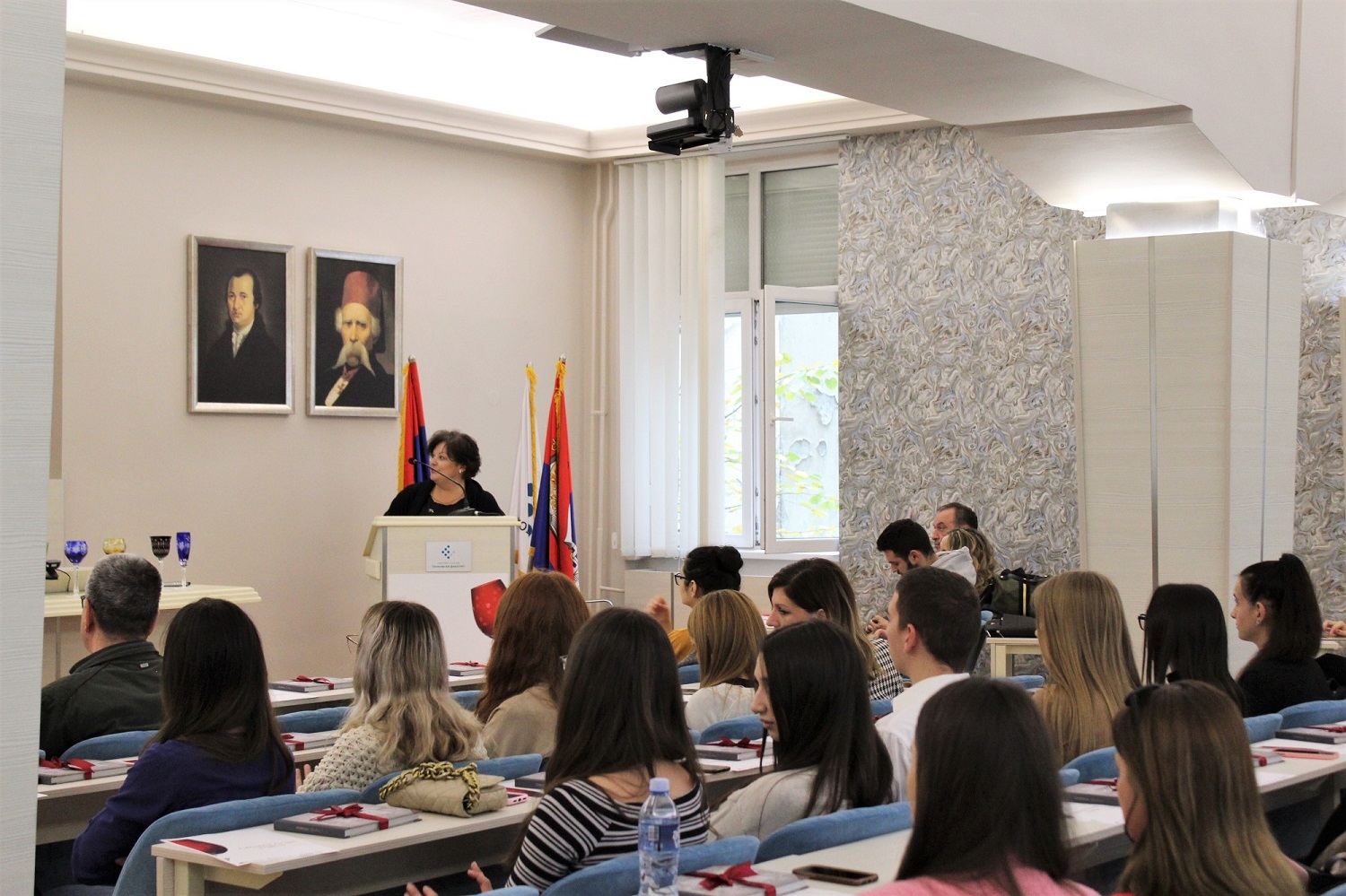

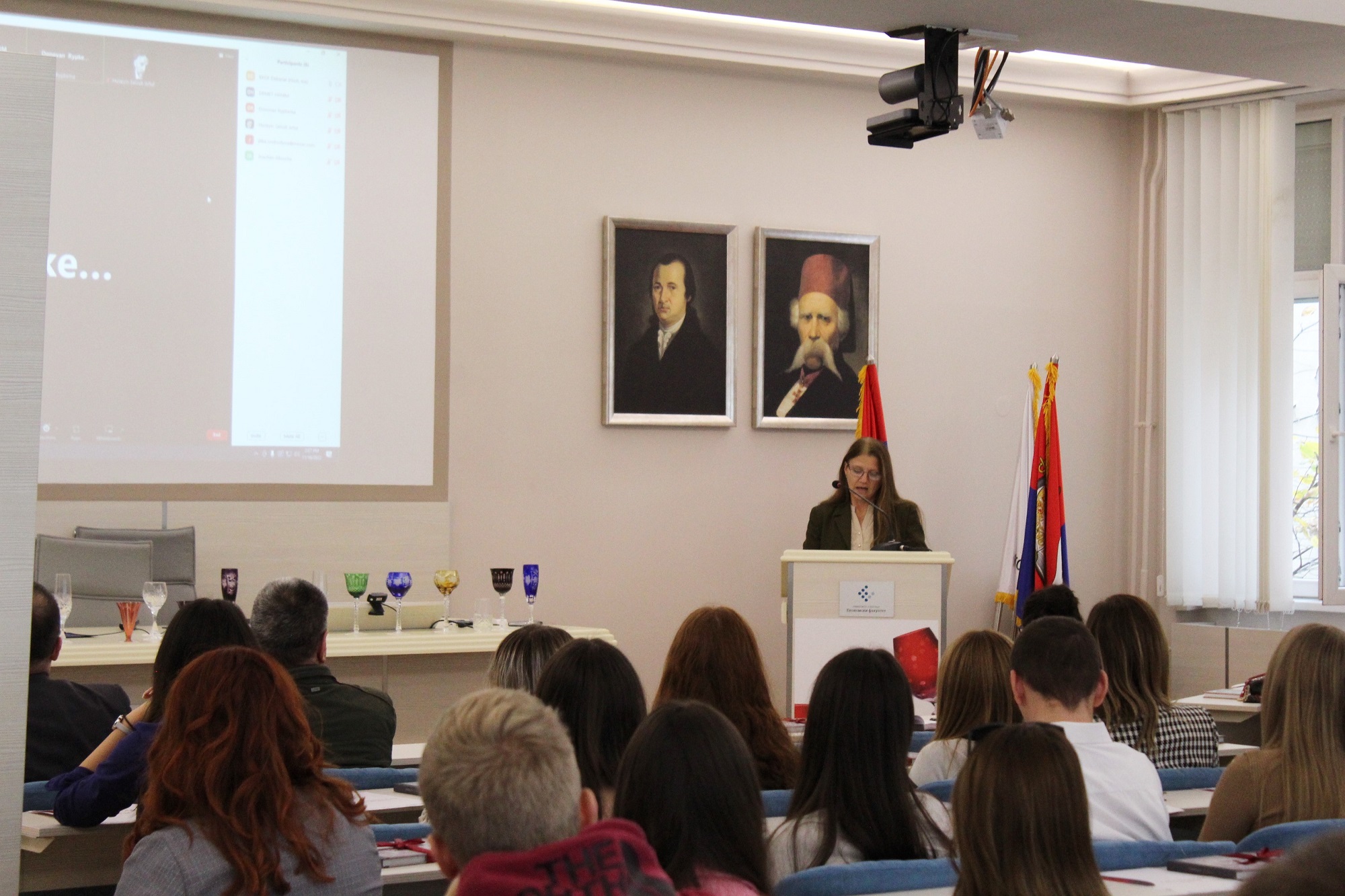

Thanks to the first Forum, in which experts from many countries participated, we are now strongly supported by different partners with whom we are entering in the new stage of development of our Initiative, dedicated to the revitalization of hadmade glass production in Paraćin. Those activities will be based on our experiences gained through the Creative Glass LAB program. In the coming year (2024), together with the Corning Museum of Glass - Glass Studio and other partners (Institute for Heritage Protection, Belgrade and FREN Creative Economy Lab), we will work on the Preliminary Technical Assessment for the revitalisation of handmade glass and establishment of the Creative Glass HUB as a kind of glass production laboratory that will connect the old glass masters with designers, artists and local community.
Creative Glass Lab is a crucial pillar of the Creative Glass Serbia initiative. The Lab is functioning as a platform for open innovation in exploring the redesign of locally produced vintage glass pieces, inspired by Paraćin’s glass tradition. By promoting cultural expressions in glass as fully recyclable material, the Lab wants to turn an unwanted past of the collapsed Serbian Glass Factory into an asset for sustainable and fair local development of peripheral places such as Paraćin.
The Lab is also a platform for discovering unique characteristics of Paraćin’s glass and presenting them as elements and inspiration for creative entrepreneurship, as well as a platform for the application of digital humanities tools in the protection of traditional cultural expressions. A specific combination of such tools – visualization, text analysis, storytelling, animation, mapping, timelines, content management systems, web design and 3D digital prototyping, (art)coding and programming – could be applied to digitally transform glass heritage and traditional glass expressions (through the so-called metaglass engineering).
The concept of distributed design is integrated within our approach that enables digital modification, manipulation, and fabrication of 3D models of glass pieces and related manufacturing tools, offered to assist redesign and creation of new glass products inspired by Paraćin’s tradition. Based on the reconstruction of old glass artefacts, models can be 3D printed and serve as moulds for new glass pieces. That puts digital humanities and distributed design even more in the function of the revitalisation of glassmaking, and the promotion of contemporary cultural expressions in glass.
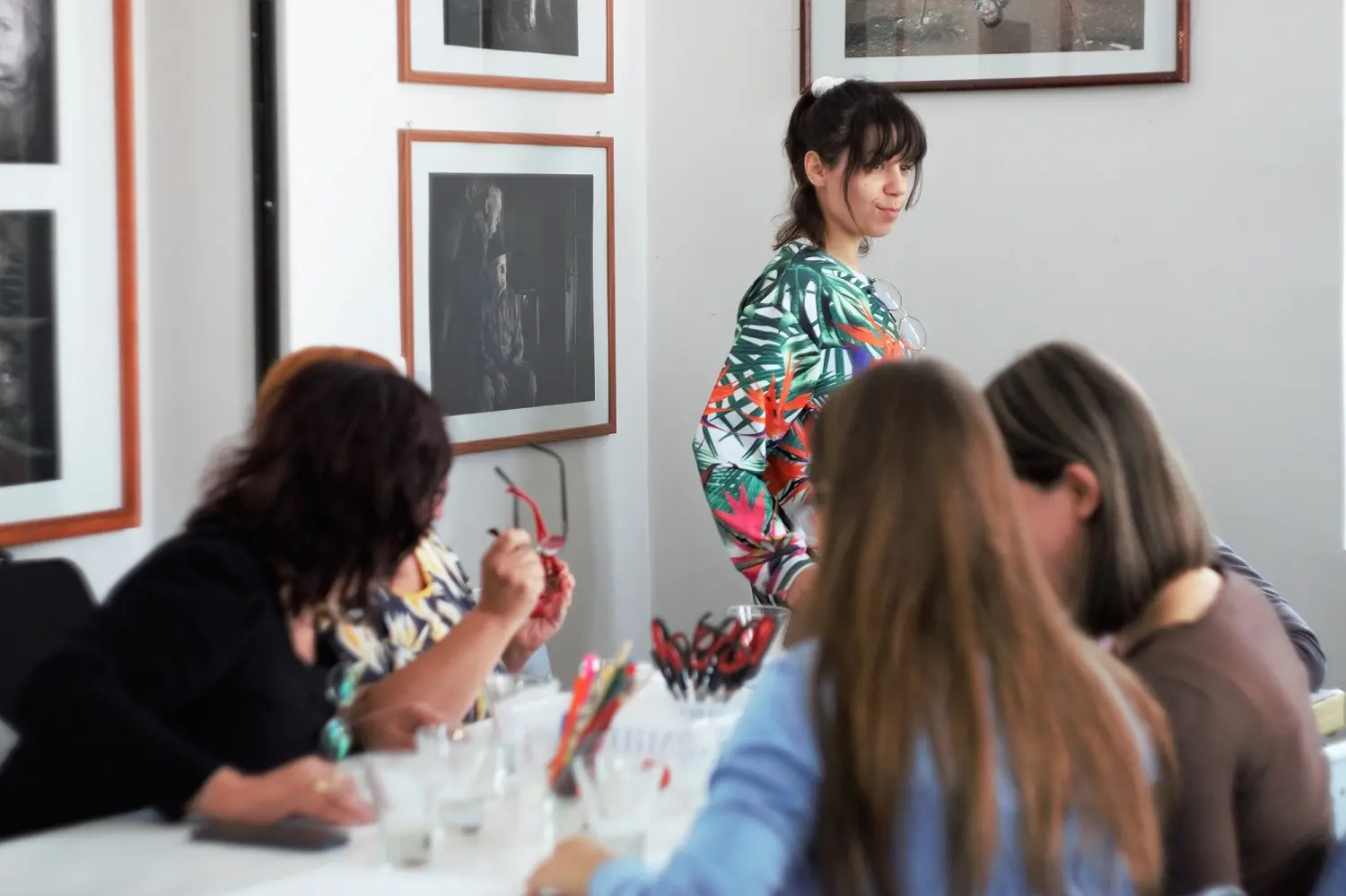
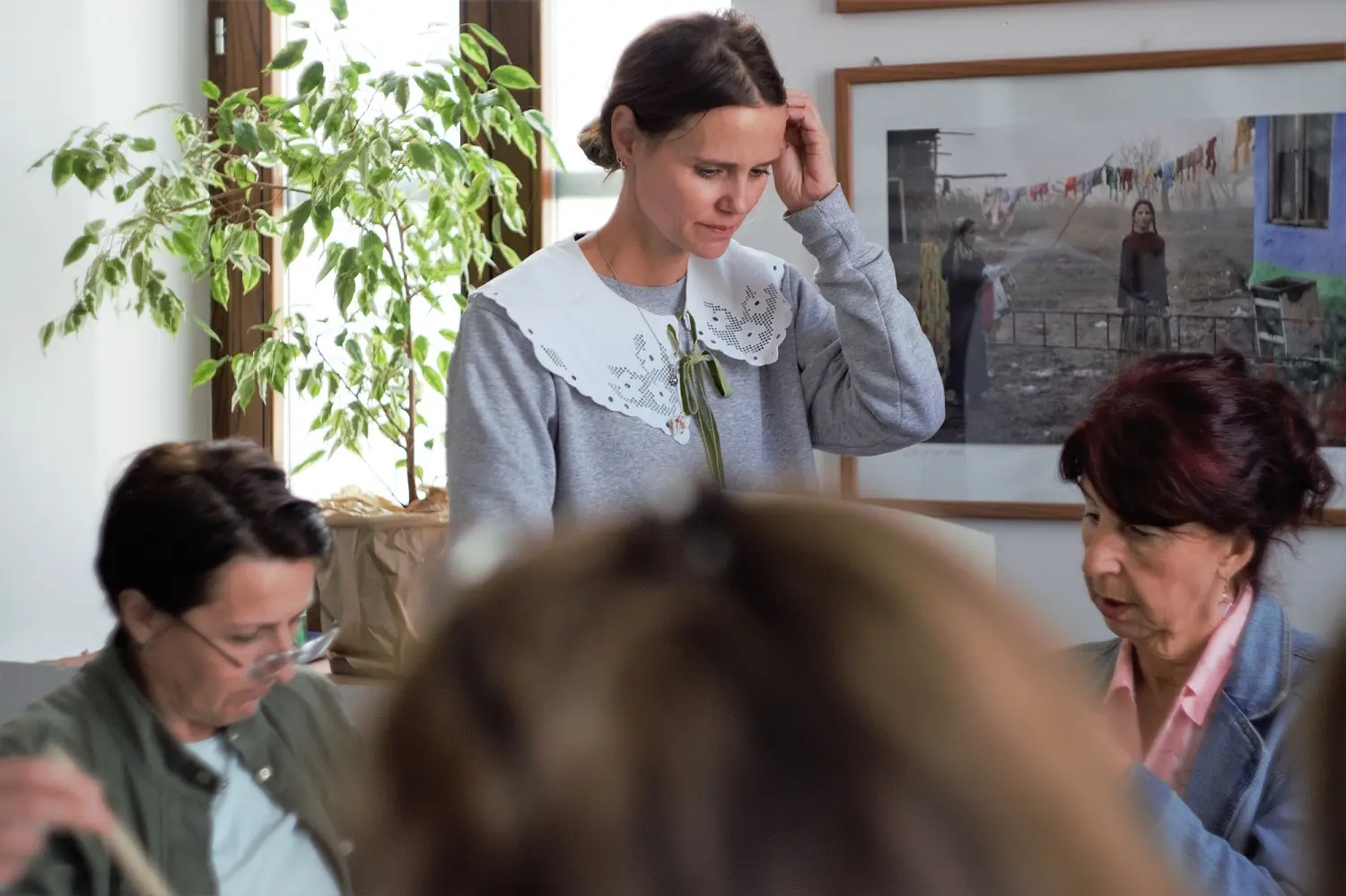
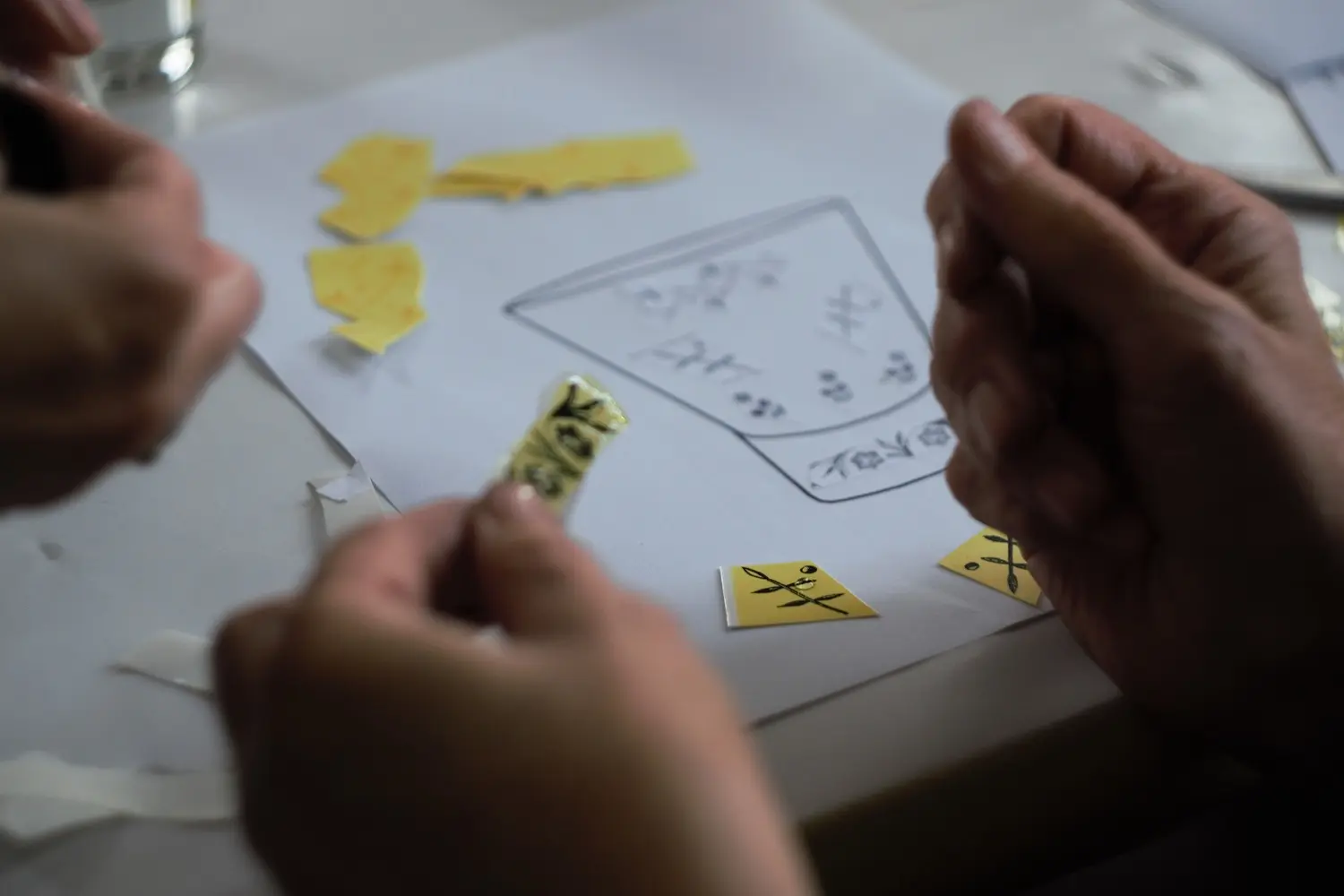
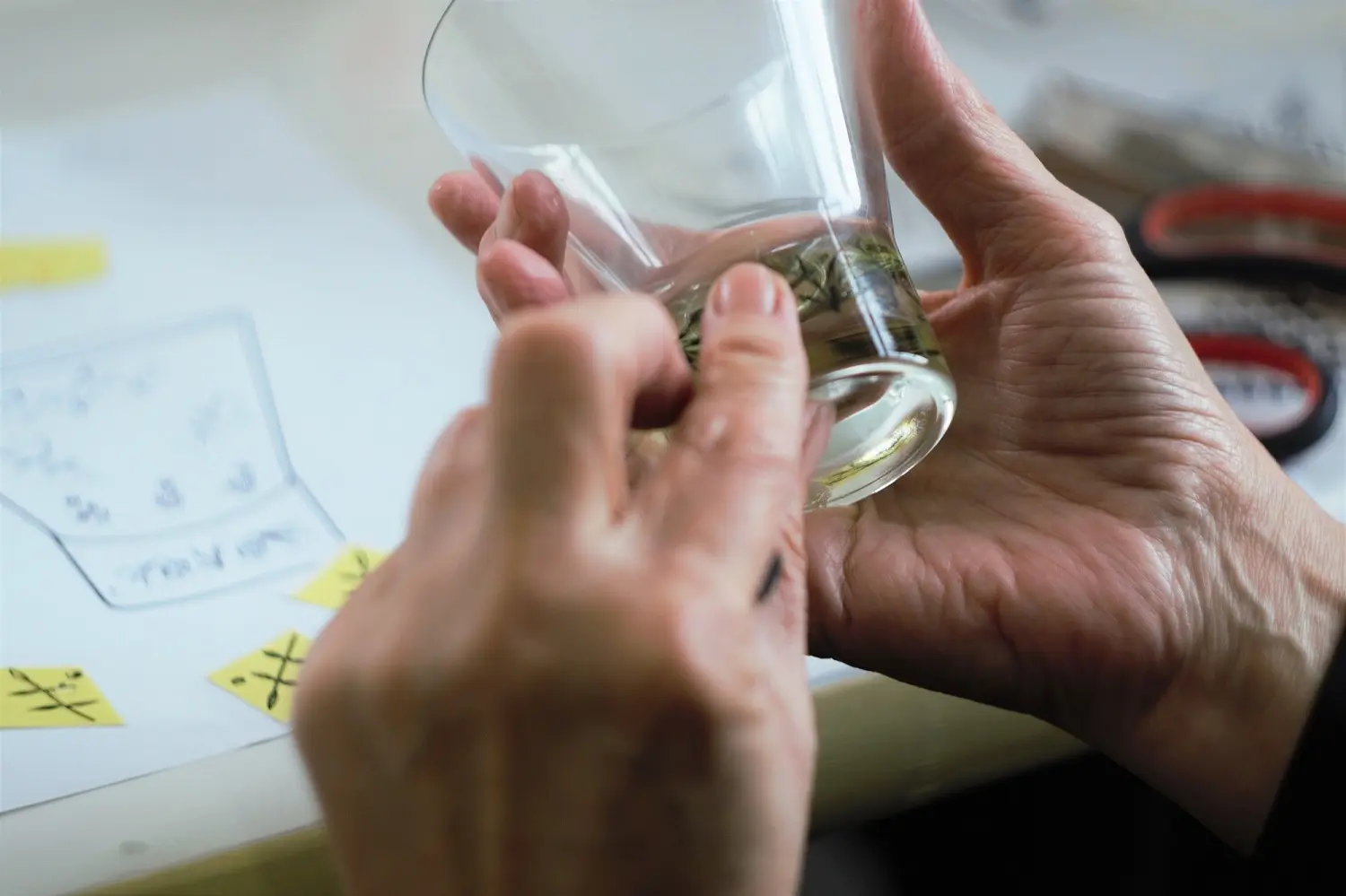
A set of digital tools called metaglass engineering that combined virtual 3D modelling, experimental digital archaeology, gaming, and digital arts, was applied mostly to digitalise and digitally present Paraćin’s glass on the platform Creative Glass Serbia.
Aside from presenting their look and dimensions, these glass items are also interactive – they either spin around their axis or, using animations and gaming technologies, are placed in a certain context (past or contemporary). For example, for the drinking glass Jadran animation was also modelled and conceptualised to have an immersive character. Water set Kotor is represented in a scene from the past whose reconstruction was based on newspaper articles, stories and photographs from the period when the set was in use. That way, we have also implemented the model of the heritage sensory experience, activating visual senses in particular. Such presentation of glass made it possible to erase the border between the physical object and its viral copy created by 3D modelling based on technical drawings, photos and other relevant documentation.
Following the principle of “Leaving no one behind”, the platform Creative Glass Serbia is also designed as an inclusive web content that, via screen readers, can be accessed and used by visually impaired and blind people, autistic, deaf and people partially unable to hear, and people with dyslexia. All relevant AV WG Web Content Accessibility Guidelines have been implemented through platform optimisation, content creation and user experience.
decolonizing glass heritage and creative glass production
The Creative Glass Serbia’s activities realised during the UN Year of Glass 2022 and with the support of the International Commission on Glass had several effects.
Presenting and promoting local knowledge and skills, they significantly contributed to the public awareness of the value of Paraćin’s glass-making tradition for the diversity of cultural expressions in glass, especially for the decolonisation of glass heritage and creative glass production.
There were three kinds of effects. Firstly, the activities increased knowledge, developed new skills, and motivated 54 participants in two workshops, enabling them to further explore Paraćin’s glass-making heritage and its living culture. The workshops also included participants coming from marginalized groups, and increased their capacities for creative activities related to glass (re)design, encouraging them to look for their group’s legacy in Paraćin’s glass-making history and culture.
Secondly, our activities made a strong impact on the improvement of the well-being and creativity of women in Paraćin. As many of them worked in the Serbian Glass Factory, especially on delicate jobs in manual glass decoration, they were pleased to see that experts and artists are starting to appreciate their work.
Thirdly, the Creative Glass Forum increased the knowledge and motivation of more than 1600 people to further explore a vast number of glass products made in Paraćin, and see them as cultural expressions worth studying and reinterpretation. The Forum also enabled interactions between different stakeholders in glass-making heritage and contemporary cultural production – museum professionals, creative entrepreneurs, artists, industry representatives, and educators – and started to gather them around the idea of the revitalization of the intangible glass-making heritage of Paraćin.

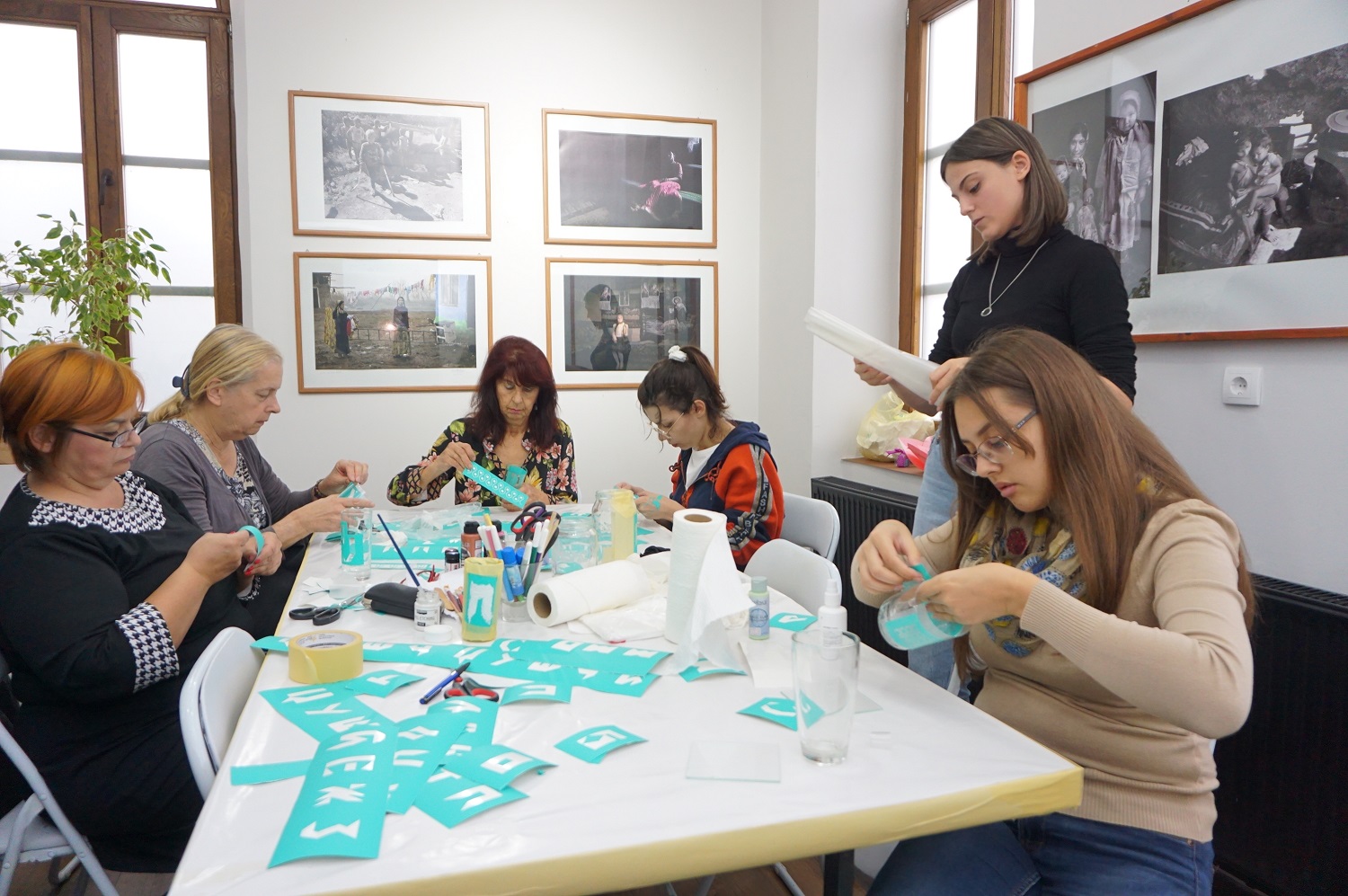

Agenda 2030 in the heart of creative glass Serbia
By endorsing the 2030 Agenda for Sustainable Development and its 17 Sustainable Development Goals (SDGs) in 2015, the world community reaffirmed its commitment to sustainable development. Through the Agenda 2030, 193 member states pledged to ensure sustained and inclusive economic growth, social inclusion and environmental protection, and to do so in partnership and peace. At the heart of the 2030 Agenda are five critical dimensions: people, prosperity, planet, partnership and peace, also known as the 5Ps. That motivates and encourages our Creative Glass Serbia initiative to take transformative steps towards a sustainable and fair development of manual glass-making through creative entrepreneurship in glass. This is how our activities supported by ICG’s seed funding contributed to the SDGs:
SDG #3 Ensure healthy lives and promote well-being for all at all ages
Our activities improved the well-being of 54 women by involving them in innovative workshops for creative work with glass. They gained full access to the unique cultural content and were socially included. Recently, more and more importance is being given to arts and culture and their influence on well-being. Through the social interaction during our workshops, those women felt more confident, and the new skills they learned helped them to better understand the nature of their possible creative hobbies or entrepreneurial initiatives.
SDG #4 Ensure inclusive and equitable quality of education and promote lifelong learning opportunities for all
Our Creative Glass Labs for 54 persons from a small town in Serbia (Paraćin), where people mostly do not have access to lifelong learning opportunities and creative expressions, offered them a program for acquiring new skills. Some of those skills are related to the digital redesign of glass objects, so the participants acquired specific digital skills which enabled them to better understand their digital everyday life and take part in it. The Creative Class Forum also showed how the glass-making tradition of Paraćin can inspire citizens to harness it by acquiring and applying knowledge and skills which could help them to become entrepreneurs in different aspects of glass-making.
SDG #6 Achieve gender equality and empower all women and girls
About 90% of participants in the activities were women. We encouraged them to express their creativity in glass-making, mostly in decorating. They got new knowledge and skills for creative work with glass based on their hometown’s tradition made by their mothers, grandmothers, friends, neighbours, etc. who worked at the local glass factory. They gained more courage through the workshops and discovered ideas about how to develop their artistic and creative expressions. The workshops also introduced them to the Homeland Museum and made them actors in the creative processes of joint work with professional artists. The intergenerational dialogue established between the former workers of the Serbian Glass Factory and the younger generations helped all of them to better understand the past, the transition of the Serbian Glass Factory (transformation of ownership), and draw lessons for the future.
SDG #8 Promote sustained, inclusive and sustainable economic growth
We promoted glass, for which the town of Paraćin was known, as a fully recyclable, green material. Women of all generations and young people were particularly interested in our mission in the artistic recycling of beautiful old glass pieces produced in their hometown, very often by their family members and ancestors. By showing them very practically how old glass can be eco-creatively approached to get a new life and new, unique value, they understood better what Creative Glass Serbia is about – we inspire and support artists, creatives and the local community to develop their own cultural expressions in glass and run sustainable entrepreneurial initiatives to make Paraćin again known for its glass.
SDG #12 Responsible consumption and production
Creative Glass LAB is strongly focused on glass circularity. Its sustainability is based on the circularity and safeguarding of traditional glassmaking techniques through digital arts, immersive experience and creative entrepreneurship. Inspired by the tradition of Paraćin glassmaking, the designers at the Creative Glass LAB are cooperating with the local community in the mode of open innovation to create a new value of discarded glass and increase its functionality. This way, the redesign and revalorization of a single glass piece produces a carbon footprint of about 0,1 kg of carbon per kilogram of glass. In a glass factory ecosystem, disposal of these glass pieces as waste, their storage and reuse would produce a carbon footprint of about 0,9 kg of carbon per kilogram of glass, which is nine times more than the Creative Glass LAB with its transformative approach to discarded glass. In addition to that, efforts are being made to popularize the recycling of glass through artistic and creative approaches (and building skills and knowledge for that), raise awareness about the importance of reduction of glass waste, and promote new habits of glass usage that are reducing environmental pollution.
SDG #17 Strengthen the partnership for sustainable development
Our activities established good communication between different stakeholders who became interested in mutual collaborations. More than 500 young people became interested in manual glass production and related creative entrepreneurship moved by the Paraćin’s heritage in glass making. The Creative Glass Forum and the workshops also widely spread the word around the country that Paraćin’s glass heritage is rich and valuable, and therefore deserves revitalization through creative entrepreneurship and glass art.